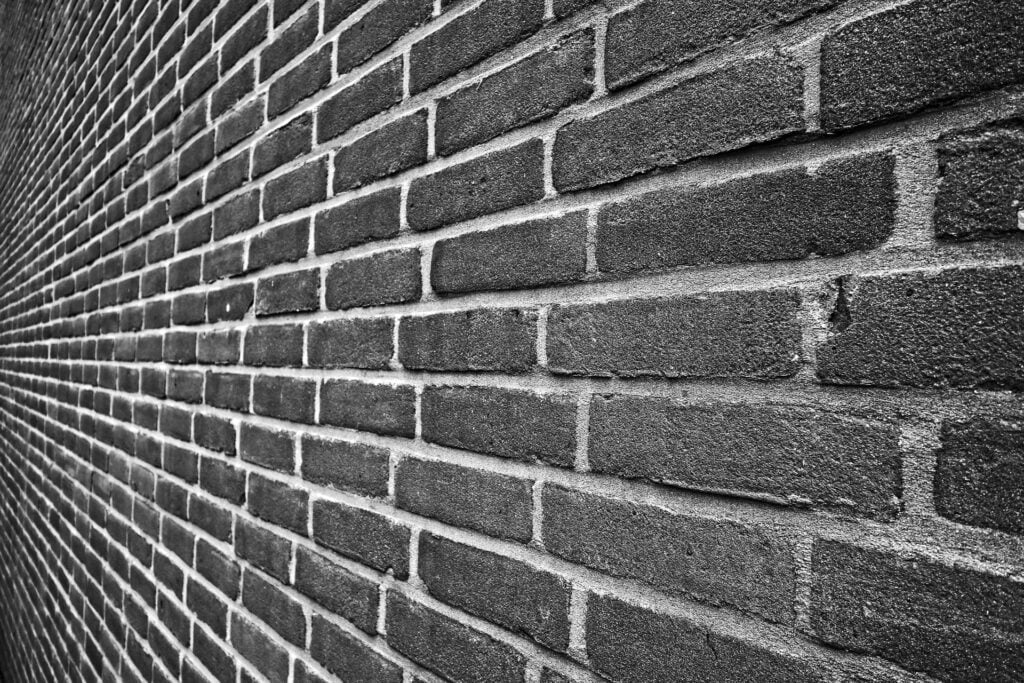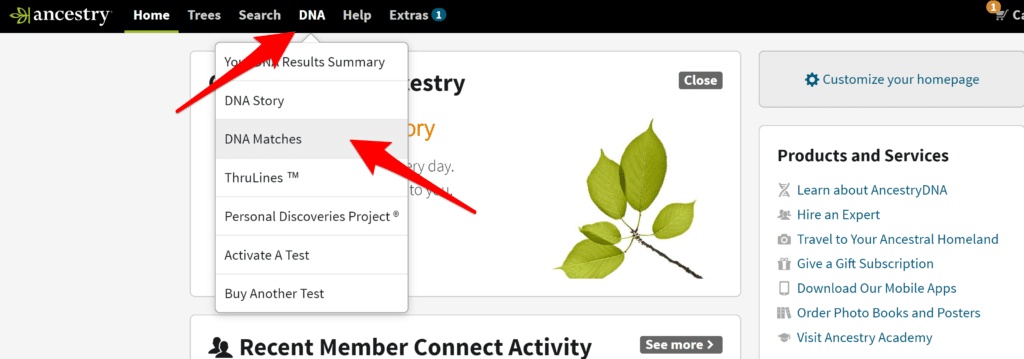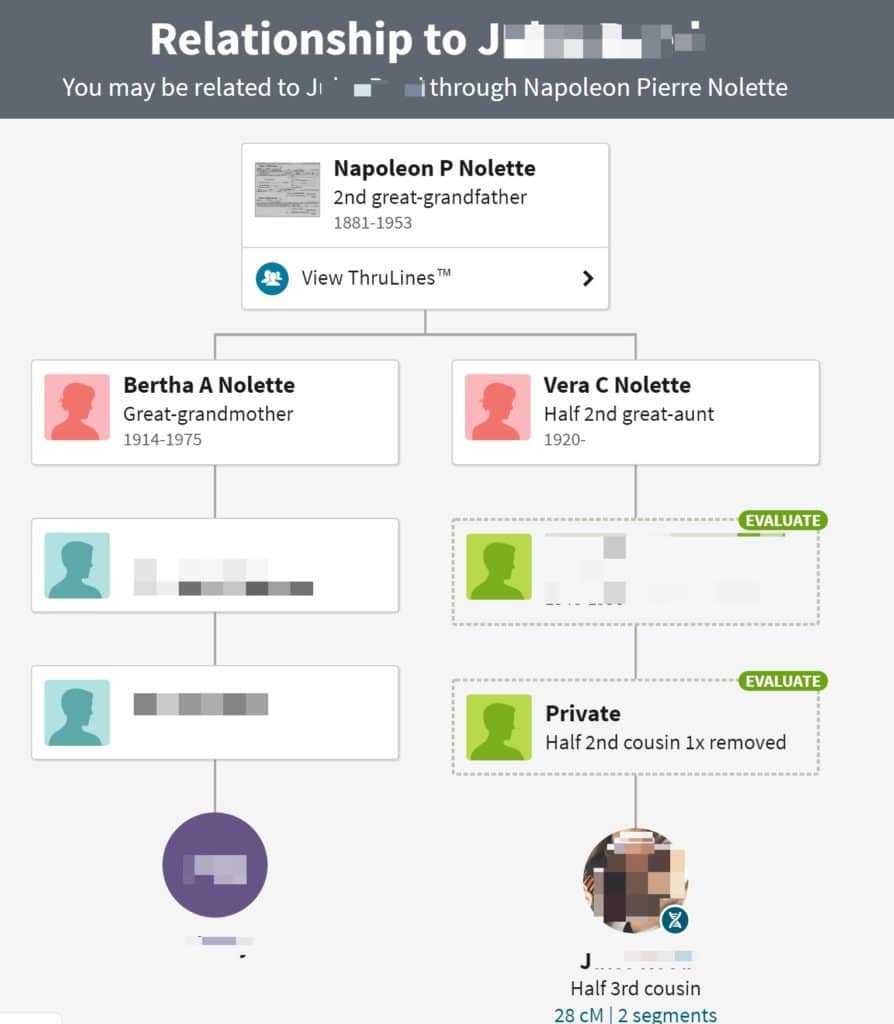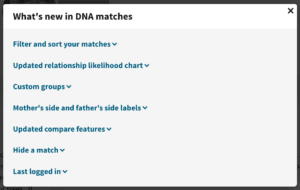Are you one of those people who bought an Ancestry DNA kit but don’t know how to effectively use your DNA results to break through brick walls? Trust me, you are not alone!
Every tree has at least one brick wall and they can be so very frustrating! When your research hits a roadblock, it’s time to investigate your DNA – but first, you must learn to harness the tools.
One of the very best tools that Ancestry offers is its Ancestry DNA Matches. Included in this tool is every member whose DNA matches your own and, the higher the centimorgans you share, the closer the relationship will be. Each of these DNA matches are connected to you through a person in the past and if you group your matches together you can focus your research and close gaps in your tree.
Sounds pretty simple, doesn’t it? It actually is. Especially if you have a thorough knowledge of your existing tree, an ability to organize your matches, and a smidgeon of creative thinking.
Before you begin though you will want to make sure you have a few things in place. You will have to have already taken and received your results from Ancestry DNA. You can buy a test here if you need one.
You will also need to connect your family tree on Ancestry with your results. To find out how to do this please read this help article.
Once you have done these two things you will be well on your way to grouping and better understanding your DNA Matches so that you can use them to better build your family tree.
Also note that parts of this walk-through include elements of Ancestry’s feature, Thrulines, which attempts to help you discover how you are related to your matches automatically. That feature is definitely something to explore separately as well. You can find help for it here.
Getting Started with Grouping Ancestry DNA Matches
Start your research by giving yourself ample time to work – at least an hour. You will need this to truly dig deeply into your matches and group them properly.
To get started, open up your DNA Matches under the DNA dropdown on Ancestry.
Apply the Common Ancestors Filter
Now that we are in our matches section, we can apply a filter. Click on “Add a Filter” and choose one of the most powerful: “Common Ancestors” to find only matches where a common ancestor has been discovered using your tree and the tree of the match. This filter can be extremely helpful when the match has a well-developed tree. But, be wary – the assumptions here can also be incorrect.
Once you apply this filter you have a list of matches with a common ancestor suggestion. Choose the first match that you do not know personally by clicking on their name. You will now see a page comparing them to you.
On the left side of your page, you should see a list of the common ancestors that you share. Click on “View Relationship” which will show you the descendants of the common ancestor down to you and your match. Keep this important tip in mind and use it often as you build your groups.
Create Common Ancestor Groups
Once you have established the common ancestor, it is time to add this match to a group. It is best to start with one set of great grandparent couples. Later, you may be able to fine tune your couple to one ancestor, once you start to see connections.
For your first match, click on “Add/edit groups” which is located on the right. Choose a color and edit it to one common great grandparent couple. For example, apply the color orange and name the group “Smithson and Burke.”
Now, the fun begins! Click on “Shared Matches” for you and this match. You can, with some confidence, add them to the same group! Of course, it is best to test things before you do. To do this, open these matches and look for common ancestors by looking at their tree, if they have one. Also, review their ethnicity to see if it aligns to you and your first match.
Complete this activity by comparing and color-coding every Ancestry DNA Match that you can. It is extremely important to remember that matches may only be connected through one grandparent within the couple. This knowledge allows you to begin to finetune your groups.
You should connect matches through your 4th to 6th cousins. Venturing beyond may not yield results. However, as you begin to see results, you might want to go back and check distant cousins to solve brick walls, especially if they are a quality researcher with a robust tree. Also, note that there will be outliers who match only to you and not other members. These may be disregarded as well.
Step 3: Wildcard Ancestor Groups
Through this process, you will come across groups with no common ancestor listed. You might analyze their ethnicity and their tree and still not see a great grandparent connection. Group these shared matches as wildcards.
These are my favorite! Groups that lack a common ancestor may be just the ticket to help you solve brick walls.
Start by reviewing trees and ethnicity to find places that are the same, as well as surnames. If the wildcards share a common surname with one another, this may be a surname that should be in your tree but isn’t yet. This may also indicate that some of the members in this group of matches are closely related to one another.
Step 4: Contact Shared Matches
Due to the fact that your wildcard groups may also be your brick walls, it’s time to reach out and connect. Start by focusing on the smallest group within your wildcard matches. Contact a few of the matches within the group. For advice on how to approach that initial contact, look here.
Review the trees and ethnicity of your wildcards. Hypothesize about who you believe the common ancestor is. You may only be able to connect the group through a common surname and not a great grandparent couple. Either way, this should be the focus of your communication.
Try asking your shared matches if they have ever heard of one or more of your brick wall ancestors. Attempt to work together to solve the mystery. Keep the lines of communication open by offering to help them with questions they may have.
Step 5: Create Hypothetical Trees
Once you have contacted your shared matches, it is time to build hypothetical trees. Add a new tree to Ancestry but make it private – this allows you to play a little without interrupting the research of other members.
Play out a hypothesis by stating something similar to the following: “I believe that my great grandmother, Annie Quinn, was the sister of my “4th to 6th cousin, John Dixon’s (your Ancestry DNA match) great-great-grandfather Michael Quinn, who was born in Wexford, Ireland in 1862.” Add Michael Quinn and his relatives from John Dixon’s tree. Add your Annie Quinn and her relatives. Then research to locate evidence that either supports or contradicts your hypothesis. Repeat this process for any and all wildcard groups that you have, even if you are unable to contact the tree owner.
Don’t forget to check in with your list of Ancestry DNA Matches every month or so, and especially after holidays, as more and more results are uploaded into your match list.
Best of luck in your hypotheses!
Also Read:
Ancestry’s ThruLines Helps Discover Your Ancestors Using DNA Matches
What You Will and Will Not Learn by Taking a DNA Test for Ancestry
4 Things You Should Definitely Do With Your DNA Results (and 3 You Shouldn’t)
By Bridget Sunderlin. Bridget is a professional genealogist serving clients in and around Maryland with a Master’s in teaching. She has been actively researching her Irish roots for well over 30 years. Throughout her research, she has come to find that her family actually hails from all of the countries within the British Isles. In 2017, she visited some of her ancestral lands, meeting quite a few Irish and Scottish cousins along the way. Ms. Sunderlin believes that the act of researching one’s family history helps us to “be rooted.”






